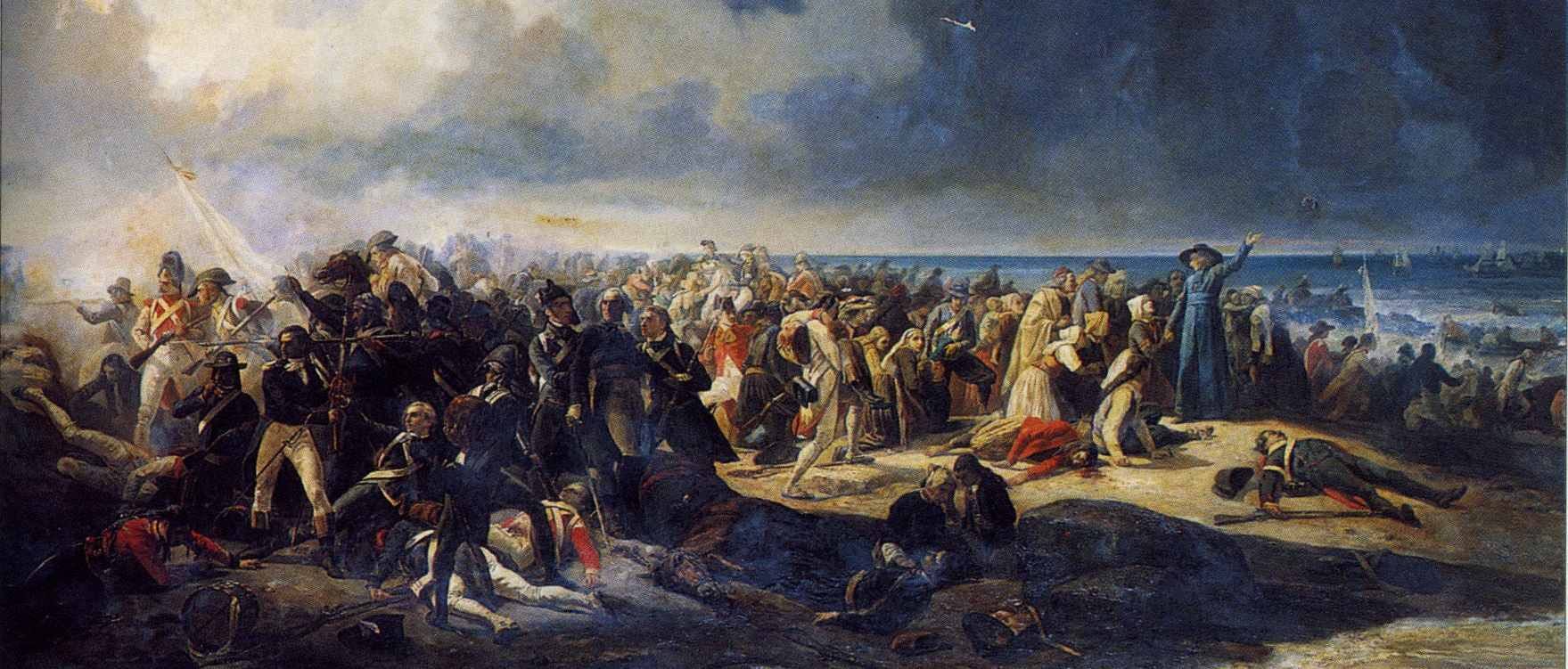War in the Vendee
Posted on 14th June 2021
As revolution raged in Paris that would change France forever a conflict also erupted in the Vendee, an isolated rural region on the West Coast of the country. It would escalate into a full scale civil war, a war within a war and one that would experience the full savagery and horror of the coming Terror.
As with any such conflict no one issue defines it but in the Vendee religion was more important than politics and as early as 27 November 1790, the imposition of the Oath of the Civil Constitution of the Clergy which subordinated the Roman Catholic Church in France to the Revolutionary Government had split opinion with the opposition to it so intense that despite widespread violence and intimidation just 54% of the priesthood had taken the Oath nationally and only 7 of 160 Bishops. In the countryside opposition to the Oath was even greater with 25% of priests taking it while in the Vendee it was just 10%.
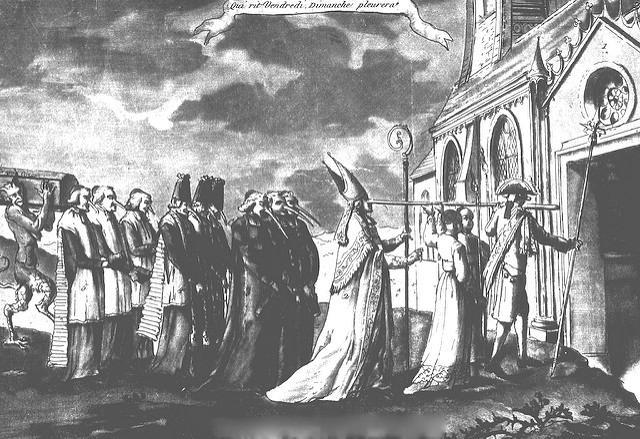
As far as the Government was concerned this widespread rejection of the new Ecclesiastical Order could not and would not be tolerated but already in conflict with external enemies the Revolutionary Government had no desire to wage war on its own people and so negotiations were under way with the Vatican in Rome to try and find a solution to the impasse.
Pope Pius VI was no friend of Revolution however, and rather than intervene he informed the French representatives, and indeed Louis XVI with whom he was in direct communication, that despite being the successor to St Peter he had no authority over the independent Gallican Church other than moral. He would not then seek to intervene, he would not publicly endorse the Civil Constitution, and he would not even suggest that the Catholic Church in France should do so. Instead, it would be left to the individual priest to look to his conscience - he would later abandon any pretence of impartiality and denounce the Revolution outright.
The reaction of the Revolutionary Government and its supporters in France, in particular its more radical elements among the working class of Paris and other cities, was to increase the persecution of refractory and non-juring priests and many hundreds were to be attacked and killed over the next few months. Royalist agents were to use these persecutions to prey upon the fears and anxieties of a deeply conservative peasantry. But it was not the persecution of the clergy or even the execution of King Louis XVI in January 1793 that drove the Vendee into open revolt but the implementation of the levee en masse.

The levee en-masse introduced on 24 February 1793, was an emergency measure intended to conscript 300,000 men to fight the Austrian and Prussian Armies that had invaded France and were threatening the very survival of the Revolution itself.
The Vendean peasantry deeply resented their young men being forcibly dragged off to fight an enemy they had no quarrel with and for a cause they didn’t support.
For many months they had seen their women attacked for attending Mass, their Churches closed, and their priests arrested or forced to go into hiding now they were being ordered to make the supreme sacrifice. All this they believed was being imposed on them by the bourgeoisie of the towns – the tax collector, the land speculator and the blood-sucking merchant whose own sons weren’t being conscripted. Rumours soon began to spread that the agents of Government were not Catholics at all but Protestants, Jews and Freemasons.
Threatened by enemies from without the people of the Bocage sought solidarity with one another and the ‘Protestant Plot’ as it became known was ably exploited by Royalist spies based at Avignon, Comtat Venaisson and various other places who provoked the resistance and provided arms.
Although religion had not been the cause of the war alone, it soon became the focus of the resistance, and its influence cannot be underestimated. For the devout Catholics of the Vendee not being able to fulfil their religious duties was a serious matter but the degree to which the ensuing conflict also reflected genuine support for the Royalist cause is less difficult to ascertain.
After all, the Revolution and many of the changes it brought had actually benefited the peasantry. It had seen the abolition of the tithe or 10% tax levied on the land, the ending of feudal dues and of the hated Gabelle or Salt Tax. All of which they had earlier complained about in their Cahiers de Doleances, or letters of protest to the King.
But the geographical isolation of the Vendee, the peculiarity of its weather and the unusual relationship between peasant and landlord in that particular part of the country had negated much of the impact of the agricultural reforms. Attempts to impose the levee en masse were to prove the final straw.
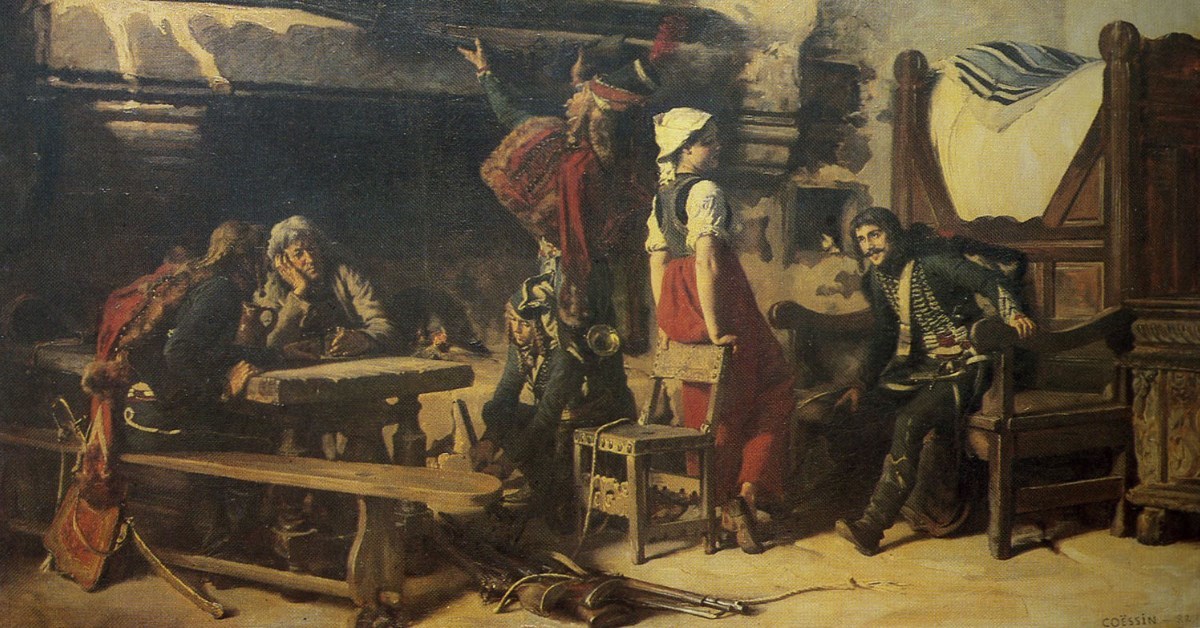
On 11 March 1793, Republican troops billeted in the town of Machecoul were attacked and massacred - it was the beginning of the War in the Vendee.
Calling for ‘Good priests, no militia, and the drawing of lots’, in their initial demands there was no mention of the Royalist cause, and it was only after they had requested their help that the battle cry changed to – For Our Priests, Our King, and the Old Regime.
Essentially a peasant insurrection the rebels had widespread support and by the late March numbered as many as 10,000 but they were disparate and with no central command. They were also poorly armed reliant upon knives, pitchforks and captured Republican muskets and cannon, and though they were to be joined by 300 Emigre Royalist Cavalry the arms they had been promised never arrived in sufficient quantities to make a difference.
With no uniforms they wore either the sacred heart on their lapels or the white cockade of Royalism in their hats to distinguish themselves from the – hated ‘Blues.’
Religion was to dominate throughout the rebellion and many of its leaders were referred to by religious titles. For example, the Marquis de Lescure became the Saint of Poitou whilst Jacques Cathelineau was the Saint of Anjou. Indeed, the war was come to be seen in terms of a religious Crusade, as indeed was all opposition to the Revolution, and when a similar revolt broke out in the South-East of France under the leadership of General Charrier his army became known as the ‘Christian Army of the Midi.’
The Republican Government in Paris was quick to respond to the threat posed by the rebellion in the Vendee and determined to stop it spreading had by the second week of March already despatched 45,000 troops to the West of the country. But they were for the most part a hastily cobbled together, barely trained gathering of raw recruits, more a mob than an army, and so they were to prove. More interested in banditry than fighting they soon dispersed all over the Vendee raiding farms, burning homes and sowing discontent in regions of the West that might previously have been considered loyal. When they did encounter the rebels near Nantes on 19 March they were routed.
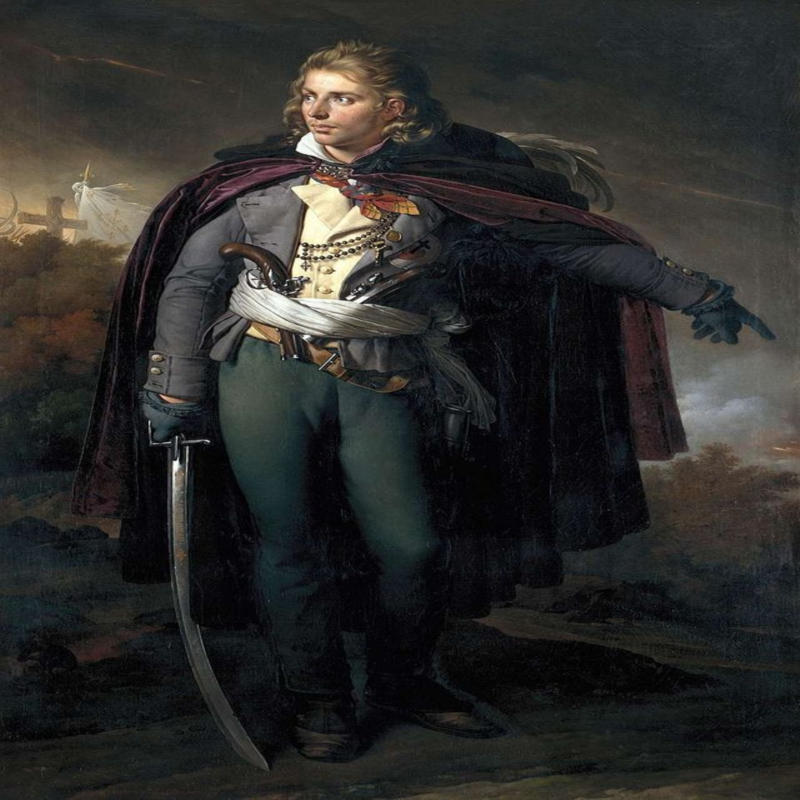
The following day the different rebel factions operating in the Vendee merged to become the Grand Army of the Vendee under the command of Jacques Cathelineau.
The 34-year-old Cathelineau, a man of doubtful reputation having in the past been a smuggler and trader in contraband goods living beyond the law was nonetheless a charismatic figure and a devout Catholic who was known to his friends as the Missionary.
Outraged by the execution of Louis XVI and the treatment of priests in the Vendee many of whom he knew personally he raised his own army and joined the rebellion with great early success taking the towns of Chemille, Cholet and Vihiers. Dashing and courageous he seemed the obvious choice to lead the new Grand Army soon to change its name to the Catholic and Royal Army of the Vendee though it was never to have a formal command structure.
With a landscape of difficult to navigate narrow lanes, high hedgerows and waterlogged and muddied fields the Vendee, also known as Bas-Poitou, was a difficult place to fight and Cathelineau knew it exploiting it to the uttermost as Republican forces stumbling around in ignorance of the terrain became isolated, were ambushed and cut to pieces. When they did face the Vendee Army in battle, they were more inclined to flee than fight and went down to heavy defeats at Thouars and Saumer.
In the wake of these defeats the towns of Angers, Niort, and Fontenay soon fell and for more than six months almost the entire Vendee lay in rebel hands. They stumbled however when in June they attacked the city of Nantes, a bloody affair that was to cost them dear when Cathineau believing he was surveying a captured landscape was shot dead by a sharpshooter. He was replaced by the more cautious and less effective, Maurice d’Elbe.
Reports of their success not only inspired similar if less widespread rebellions elsewhere, but the Royalist Turin Committee led by the Comte d’Artois, the executed Louis XVI’s brother, who had so miserably failed to support earlier insurrections in Lyon and Rouen now desperately sought to co-opt the Vendee Rebellion in the cause of the Bourbon Restoration sending Royalist Agents with messages of encouragement and support but not the armsnor the troops they actually required.
Words mean nothing when not backed up by deeds and the rebels always lukewarm embrace of the Royalist cause now cooled further. They were not fighting for any King past or present but for their religion and Bons Pretres, or Good Priests, so much so that often after a victory they would disperse and return home to their villages to say their prayers and sing te deums.

On 19 August 1793, the Committee of Public Safety in Paris responding forcefully to the setbacks in the West charged Jean-Baptiste Carrier with the pacification of the Vendee by any means including its complete destruction if necessary. When he asked for clarification, he was told in no uncertain terms – the orders mean what they say.
Carrier invaded the Vendee with 150,000 troops who were not the disorganised rabble of before but well trained and committed revolutionists who would carry out their instructions to the letter and those instructions were to be unremittingly harsh: the land was to be laid waste and the enemies of the people put to death – men, women and children alike.
Farms were raised to the ground, crops destroyed, livestock stolen or slaughtered, and the people massacred in their tens of thousands - shot, bayoneted, guillotined or drowned.
On 17 October the Vendee Army was badly defeated at the Battle of Cholet and D’Elbe captured and guillotined. Joined by thousands of refugees what remained of the army now under the command of the 21-year-old Henri de la Rochejaqueline fled further west.
Numbering around 25,000 mostly women and children they made for the port of Granville where they had been told by Royalist Agents that a British Fleet lay offshore, and an Emigre Army was waiting to assist them; neither materialised and after unsuccessfully besieging the port they were eventually cornered by the Republican Army and forced to fight.
On 23 December at the Battle of Savenay they went down to a catastrophic defeat with the mopping up operation that followed far more brutal and bloodier than the battle had ever been. When the Republican General Tureau asked Carrier what was to be done with the women and children he was told: “Eliminate the brigands once and for all. That is your duty. None can be spared.” None were.
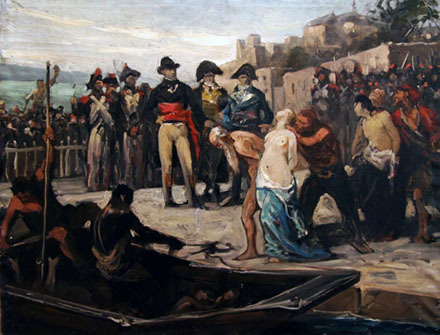
But the executions were taking too long, and musket ball was expensive, so he had had thousands of prisoners lashed to barges which towed into the River Loire were then holed and sunk - they all drowned. Others bound together in batches were mown down by artillery.
In January 1794, the Officer commanding in the Vendee General Westermann reported to the Committee of Public Safety: “I have crushed the children and massacred the women. They will not give birth to any more brigands. I no longer have prisoners to reproof me. I have exterminated all. The roads are sown with corpses. Mercy is not a revolutionary sentiment.”
Despite the destruction of their army the Vendeans continued to resist fighting a very effective guerrilla war led by an ex-Officer of the Swiss Guard, Jean-Nicholas Stofflet. They also worked closely with the Chouannerie of Brittany who had also risen in revolt but with no army to speak of they never again posed a serious threat to the status-quo.
Surprisingly given the brutality of the struggle the National Convention in Paris now issued a series of conciliatory proclamations promising freedom of worship in the Vendee and the return of sequestered property and livestock in return for a cessation of hostilities.
A treaty was signed on 15 February 1795, bringing the conflict effectively to a close and it was largely honoured by both sides the man charged with administering it General Hoche, having somewhat cynically remarked – Let the priests have their few crowns.
Still there remained those who refused to lay down their arms among them Stofflet but no longer able to depend on the support of the people even he in the end had to accept the inevitable and on 2 May signed the Treaty of La Jaunie. When he tried to renew the conflict in early 1796, he was quickly captured and put to death.
The War in the Vendee had been an internecine struggle of relentless savagery which had witnessed bloody atrocities committed by both sides. During its short duration it has been estimated that besides the 40,000 Republican troops killed as many as 200,000 Vendean’s died, or 25% of the entire population.
Following the end of the war the Vendee descended into occasional periods of lawlessness as armed bands often claiming to be the Royal Army of the Vendee renewed the conflict but more often for reasons of plunder rather than any cause to speak of. The region wasn’t fully pacified until 1801 when Napoleon Bonaparte despatched an army to enforce compliance to the earlier peace agreement.
Tagged as: Miscellaneous, War
Share this post:





